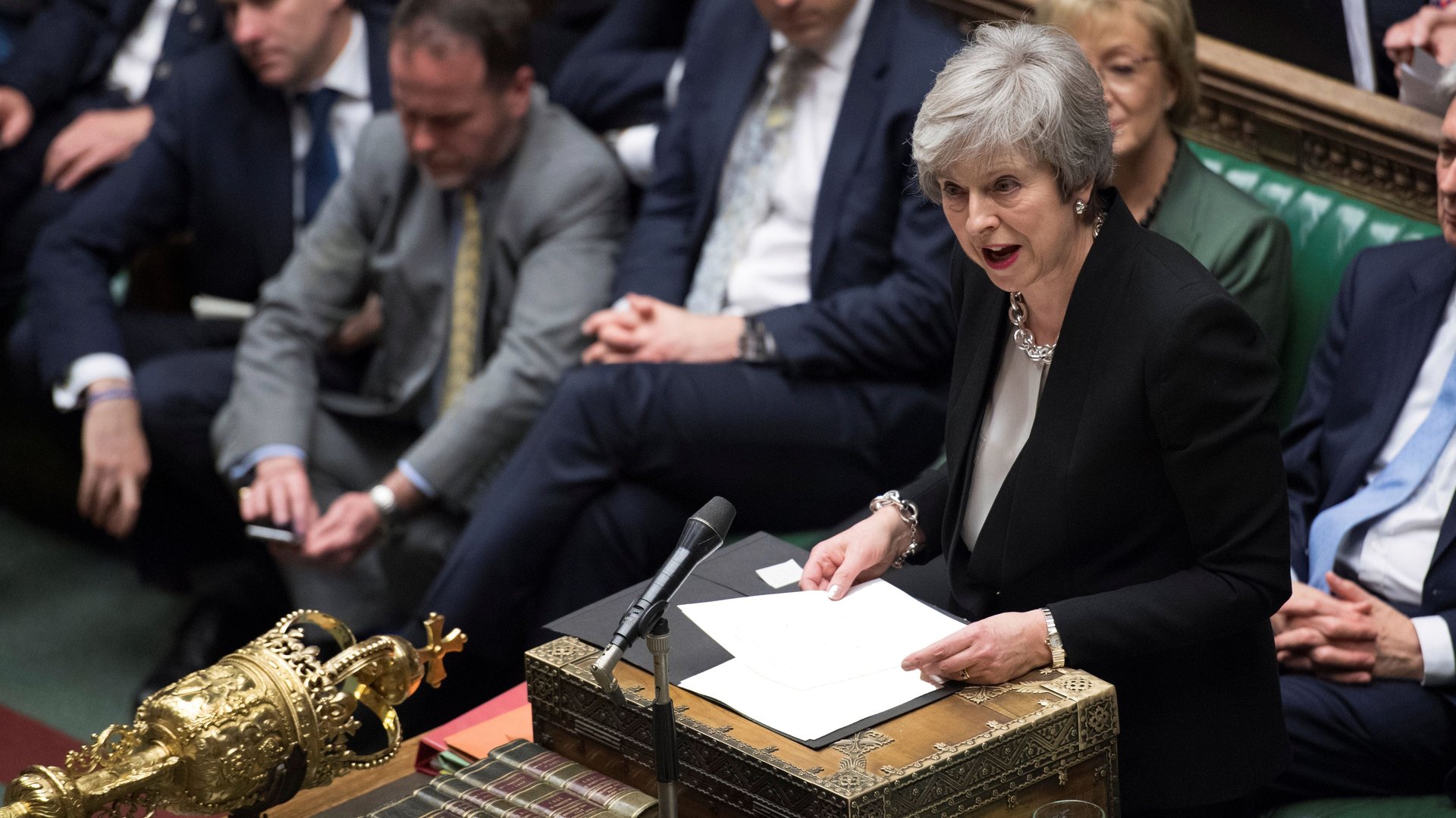What’s next for Theresa May’s Brexit deal?
Theresa May is no stranger to Herculean missions, having been tasked over the last two years with leading the UK’s complicated exit from the EU. But she now faces the seemingly hopeless exercise of convincing the EU to renegotiate a divorce deal they have repeatedly said they will not revisit.


Theresa May is no stranger to Herculean missions, having been tasked over the last two years with leading the UK’s complicated exit from the EU. But she now faces the seemingly hopeless exercise of convincing the EU to renegotiate a divorce deal they have repeatedly said they will not revisit.
Without a deal spelling out the UK’s and EU’s responsibilities to one another after Brexit, the break will immediately introduce costly legal and regulatory barriers that would destabilize trade, travel, and many other aspects of UK-EU relations.
May heads into talks with the support of the UK parliament, which voted last night (Jan. 29) for a government-backed amendment to try to replace the withdrawal agreement’s most contentious element—the Irish backstop—with “alternative arrangements.”
The UK prime minister said yesterday’s vote to pass an amendment proposed by Conservative MP Graham Brady indicated “a route that can secure a substantial and sustainable majority… for leaving the EU, with a deal.” But what that route might be is still unclear to many people both inside and outside the UK.
The EU has already said that the backstop is not up for debate, and within minutes of the vote, reiterated its position that it would not renegotiate May’s deal. “The withdrawal agreement is, and remains, the best and only way to ensure an orderly withdrawal of the United Kingdom from the European Union,” said a spokesperson for Donald Tusk, the European Council president.
The UK government also doesn’t seem to know what those alternative arrangements will entail. In a BBC interview, the person responsible for handling the withdrawal, Brexit secretary Steve Barclay, said the government has no alternative backstop proposals.
It doesn’t help that the British public itself has difficulty understanding the backstop—with Google searches about it spiking whenever there’s a Brexit development, as they did yesterday.
The issue has become the main hurdle to securing a viable Brexit agreement. May interpreted the results of a 2016 referendum, in which 52% of people voted to leave the EU, as a mandate to leave its single market. But doing so could create a hard border between Northern Ireland, part of the UK, and the Republic of Ireland, a separate EU member state. That would contravene the 1998 Good Friday accords, which established hard-won peace after three decades of conflict between republicans and British loyalists in Northern Ireland.
The EU has insisted on a backstop that ties the UK to the EU customs union indefinitely until an all-encompassing free-trade agreement is etched out. But the limbo this would create, which the UK wouldn’t be able to unilaterally end, was the primary reason the deal was voted down by a huge margin earlier this month.
Almost everyone, including the EU, would prefer having a deal in place over leaving without one, something that could have dire consequences. It is this momentum that May will use as she heads to Brussels, with less than two months left before the UK is scheduled to depart from the EU. She has two weeks to try renegotiate before she is next expected to appear in parliament.
In the meantime, British businesses and the public are concerned about what comes next, and how to prepare for it. While some are trying to unpack the intricacies of the process, others have taken to Google searches for “Brexit survival kits.”